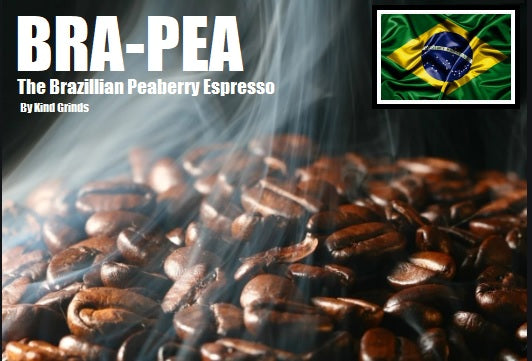Discovering the Origins Behind Specialty SOE Single Origin Espresso
Discovering the Origins Behind Specialty SOE Single Origin Espresso
Blog Article
Coffee Beans Uncovered: Finding the Secrets of Coffee and Blended Coffee Beans
When you assume concerning coffee, what comes to mind? Is it the abundant aroma of coffee or the intricacy of a well-crafted mix? Understanding the nuances of coffee beans can transform your experience. Each variety, from Arabica to Robusta, holds its very own tricks. As you explore better, you'll uncover how these beans form tastes and impact sustainability. What might you uncover about your following mug?
The Origins of Espresso: A Historical Viewpoint
Although espresso is currently a staple in coffee society worldwide, its beginnings map back to the very early 20th century in Italy. You might be shocked to discover that the innovation of espresso was driven by a desire for rate and performance. In 1901, Luigi Bezzera patented the first coffee device, aiming to brew coffee faster than typical techniques. This innovation quickly recorded the attention of Italian coffee drinkers, causing the coffee bars we know with today.
Comprehending Espresso Beans: Attributes and ranges
When you believe concerning coffee, it's important to identify the various bean ranges and their distinct tastes. Each kind brings an unique personality to your cup, influenced by factors like roast levels. Recognizing these elements can boost your coffee experience substantially.
Espresso Bean Varieties
As you explore the world of coffee, you'll rapidly discover that not all beans are produced equal; each range brings its very own unique tastes and attributes to your mug. Arabica beans are known for their smooth, nuanced tastes and lower caffeine content, making them a favored among coffee aficionados. Each range uses something various, so exploring will help you locate your perfect coffee.
Taste Profiles Discussed
Comprehending the taste profiles of various coffee beans can elevate your coffee experience. Each bean variety supplies one-of-a-kind characteristics that affect preference, mouthfeel, and scent. Arabica beans commonly present a sweeter, a lot more intricate taste with hints of fruit and floral notes, while Robusta beans have a tendency to be bolder, with earthy and nutty undertones.
When you discover single-origin beans, you might find distinctive regional tastes-- Main American beans might be bright and citrusy, whereas Italian blends frequently provide abundant, chocolatey notes.
Roast Levels Impact
Roast levels play an essential function fit the taste and aroma of espresso beans, affecting your general coffee experience. With light roasts, you'll find intense level of acidity and much more noticable fruity notes. As you transfer to tool roasts, you'll delight in a balanced account that showcases sweet taste and complexity. Dark roasts, on the various other hand, commonly existing abundant, bold flavors with a great smoky finish, however they can mask the beans' intrinsic characteristics. Recognizing these roast levels assists you pick the espresso that fits your preference preferences. Explore different roasts can cause fascinating explorations, improving your recognition for espresso. Don't wait to check out various roast degrees and locate your perfect cup!
The Art of Mixing: What Makes Blended Coffee Unique
What makes combined coffee so interesting? You can experiment with different combinations to boost sweet taste, acidity, and body, resulting in a mixture that's richer and more complicated than a single-origin coffee.
And also, mixing can assist preserve uniformity, offering a dependable flavor experience no matter of seasonal variants in beans. Whether you're a barista or a home maker, understanding the art of blending opens up a globe of imagination and taste opportunities, making your coffee experience truly distinct.
Taste Accounts: Sampling Notes of Coffee vs. Blended Coffee
Combined coffee provides a world of flavor possibilities, but when it comes to espresso, you're looking at an extra focused experience. Coffee typically showcases bold, rich flavors with a thicker mouthfeel.
On the other hand, blended coffee presents a complex tapestry of flavors. You can explore a selection of sampling notes, from pleasant and nutty to floral and fruity. Each blend can provide something special, usually combining beans from different regions to develop a well balanced account.
While coffee supplies a strike, blended coffee welcomes you to appreciate the subtleties. Whether you choose the robust toughness of espresso or the detailed flavors of mixed coffee, each cup tells its own tale, awaiting you to uncover.
Developing Techniques: Refining Your Coffee Shot
To achieve the excellent coffee shot, recognizing the developing strategies is necessary, as also minor changes can significantly influence the taste and top quality. Begin by utilizing fresh, high-grade coffee beans; grind them right before developing for optimum taste. Purpose for a great grind, regarding the consistency of salt, to guarantee optimal removal.
Following, take note of your water temperature level; it should be between 195 ° F to 205 ° F. Too as well chilly or warm can spoil your shot. Use concerning 18-20 grams of coffee for a double shot, and tamp it equally with firm stress to create an uniform puck.
Ultimately, manage your extraction time; go for 25-30 secs. A longer extraction can cause anger, while also brief can result in sour flavors. Practice these strategies continually, and you'll fine-tune your skills, attaining that rich, robust espresso shot you yearn for. Appreciate the trip!
The Role of Roast Levels in Espresso and Blended Coffee
After mastering the developing methods for coffee, it's time to contemplate how roast degrees affect the taste profile of your coffee. The roast level can significantly alter your coffee's body, preference, and scent. Light roasts tend to highlight the coffee's beginning, using bright acidity and fruity notes, while tool roasts balance acidity and sweetness, developing an all-around flavor. Dark roasts, on the various other hand, bring out strong, abundant tastes with reduced acidity, frequently generating chocolate or smoky undertones.

Discovering Sustainability: Moral Sourcing of Coffee Beans
When you select coffee, you're not just choosing a taste; you're choosing about the impact on farmers and the setting. Recognizing Fair Profession practices, natural farming techniques, and qualification criteria can help you sustain sustainable coffee sourcing. Allow's explore exactly how these factors add to a much more moral coffee experience.
Fair Profession Practices
Fair Trade techniques play a crucial function in guaranteeing that coffee beans are sourced ethically and sustainably. You support farmers who receive fair wages and job in secure problems when you pick Fair Profession coffee. This dedication to moral sourcing assists fight poverty and advertises community advancement in coffee-growing regions. You'll discover that Fair Profession accreditation additionally encourages eco-friendly farming techniques, as manufacturers are incentivized to safeguard their land and sources. By deciding for Fair Trade brands, you're not simply delighting in a rich mug of coffee; you're making a favorable influence on the lives of those that expand it. Your selection matters, and it links you to an international activity focused on fairness and sustainability in the coffee market.
Chemical-free Farming Techniques
As you check out the world of ethical coffee sourcing, chemical-free farming techniques become a crucial part of sustainability. By picking organic coffee, you sustain methods that prioritize dirt wellness, biodiversity, and all-natural ecological communities. Farmers avoid artificial pesticides and plant foods, depending instead on all-natural compost and crop rotation to improve soil fertility. This not only shields the setting yet additionally boosts the top quality of the coffee you take pleasure in. Natural farming urges local wildlife and advertises a well balanced environment, reducing the opportunities of illness and insects. Additionally, it often results in stronger, much healthier coffee plants, causing richer flavors in your cup. You're making an aware choice that benefits both the earth and your palate. when you decide for organic coffee.
Qualification Criteria Explained
Comprehending certification requirements is necessary for anyone thinking about morally sourced coffee. These criteria, such as Fair Profession, Rainforest Alliance, and USDA Organic, assurance that coffee is grown under lasting practices. You support farmers that stick to ethical labor methods and ecological security. when you pick certified coffee.
Fair Profession accreditation concentrates on supplying reasonable wages and functioning problems, while Jungle Partnership emphasizes biodiversity and ecological community conservation. Next time you're at your local coffee shop or grocery store, look for these labels, and really feel excellent understanding your coffee purchase favorably impacts areas and the setting.
Frequently Asked Concerns


Just How Does Elevation Influence the Growth of Coffee Beans?
Elevation impacts coffee bean development by influencing temperature and climate. Greater altitudes frequently generate denser beans with even more complex flavors, while reduced elevations can lead to faster growth but much less savory outcomes. You'll taste the distinction!
What's the Difference Between Arabica and Robusta Beans?
Arabica beans are sweeter and much more intricate, while Robusta beans have a more powerful, harsher flavor with higher high levels of caffeine material. You'll find Arabica favored for specialty coffees, whereas Robusta's commonly made use of in instantaneous coffee and espresso blends.
Can Coffee Beans Go Bad or Shed Taste In Time?
Yes, coffee beans can spoil and lose flavor with time. They'll become stale if you save them poorly or keep them as well long. Always keep your beans in an impermeable container Single Origin Espresso far from light and wetness.
What Are the Health Benefits of Alcohol Consumption Espresso?
Consuming alcohol coffee boosts your power, boosts mental quality, and might decrease the risk of certain diseases. It's abundant in antioxidants, supports metabolism, and can boost state of mind, making it a helpful selection for your day-to-day routine.
Just How Does Water Quality Effect Espresso Removal?
Water high quality substantially impacts coffee removal. It influences the solubility of flavors and oils, affecting taste and fragrance. Utilizing filtered water can boost your espresso, guaranteeing a satisfying and balanced mug every single time you brew.
Coffee Beans Uncovered: Finding the Tricks of Coffee and Blended Coffee Beans.
Understanding the flavor profiles of different espresso beans can elevate your coffee experience.Roast levels play a vital duty in shaping the flavor and scent of espresso beans, affecting your total coffee experience (SOE).Mixed coffee provides a globe of taste possibilities, however when it comes to espresso, you're looking at an extra concentrated experience.After grasping the developing techniques for espresso, it's time to contemplate how roast levels affect the taste account of your coffee
Report this page